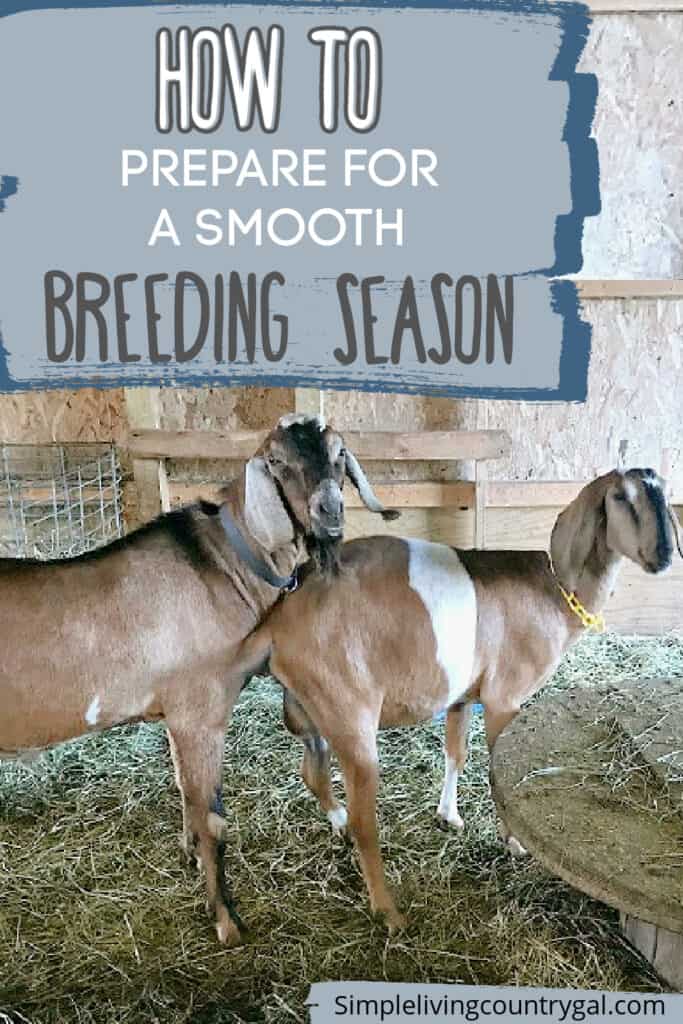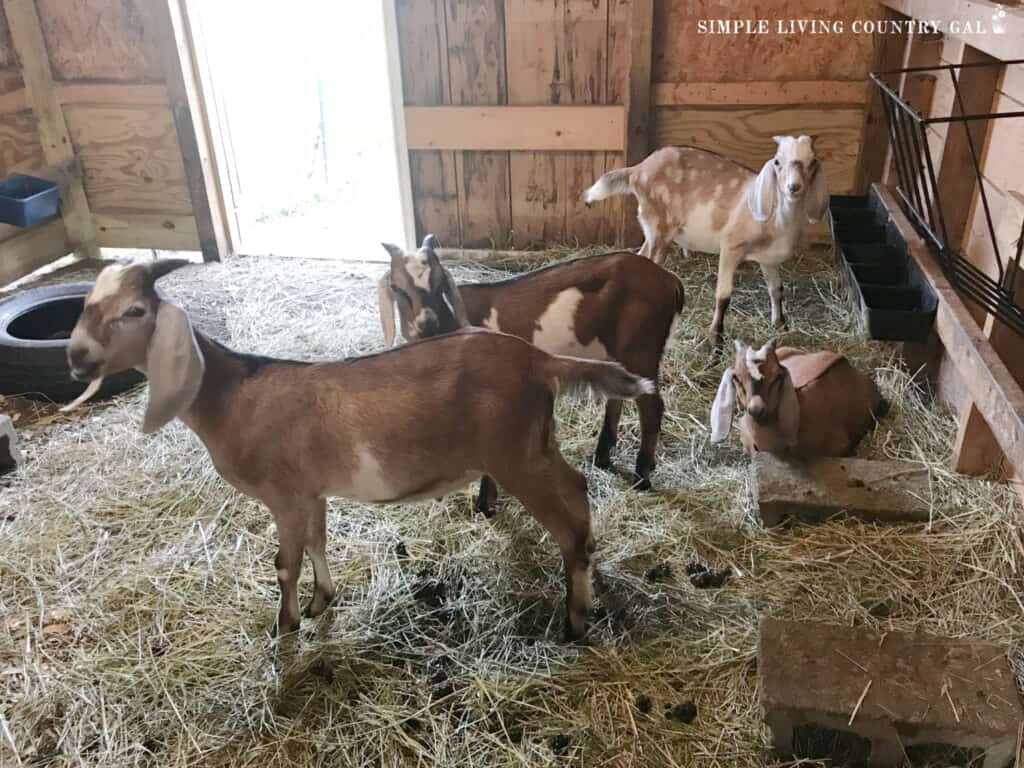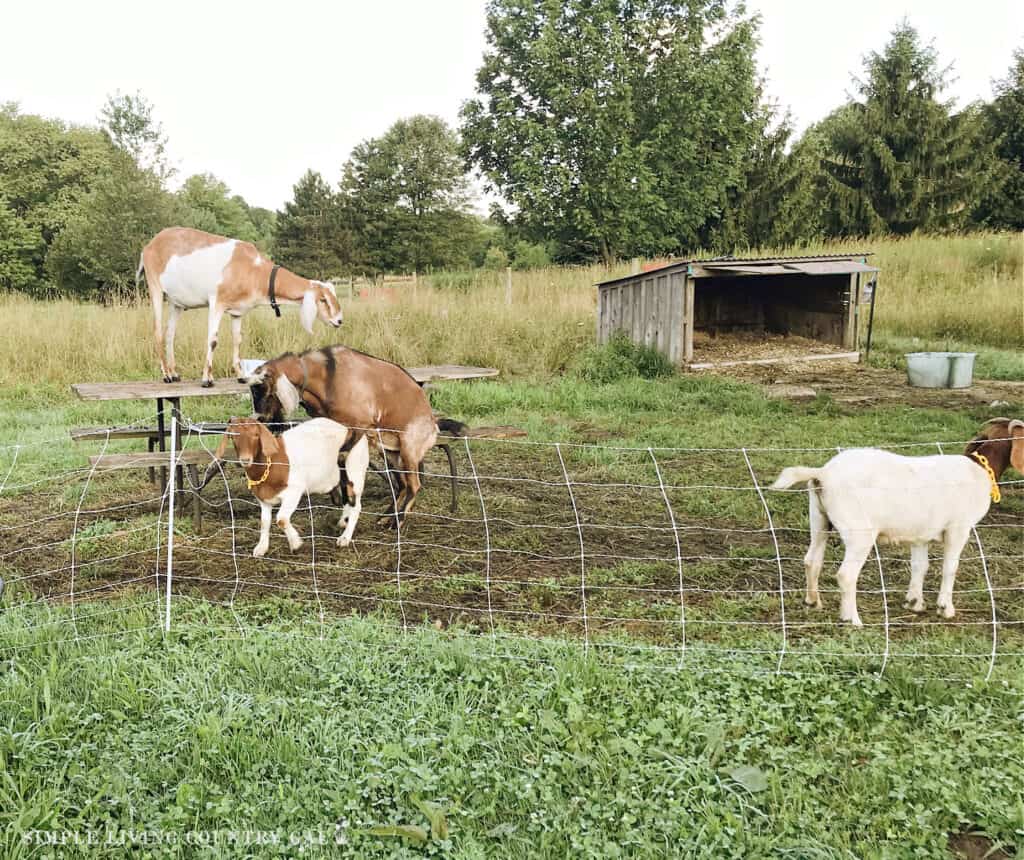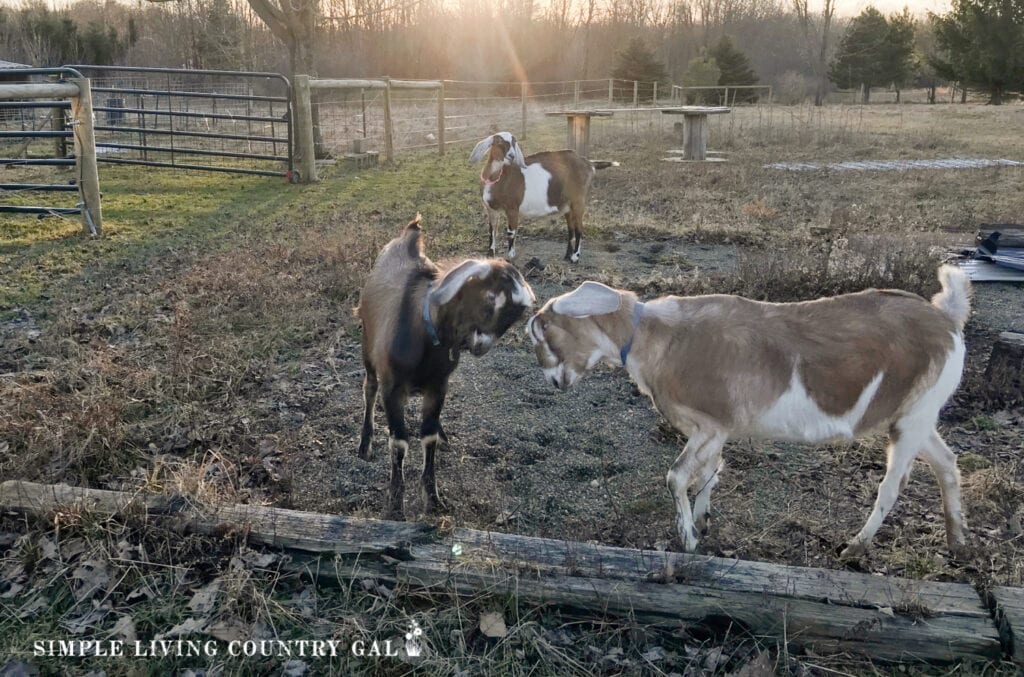WHAT IS GOAT RUT
If you are new to breeding goats, let’s start at the beginning by answering the question, what is goat rut? The official start of breeding dairy goats on a homestead.
How to raise dairy goats that give amazing milk year-round by incorporating a healthy breeding plan into your flock.

As a homesteader or family that raises dairy goats, you may have heard of people talking about “goats in rut”. Goat rut is an important part of goat reproduction as it is many times the signal that the breeding season is here. In this blog post, we’ll go over some basics on goat reproduction, things to watch for, how to prepare your herd and a few of the most common questions new goat owners have.
Goat Breeding and Goat Kidding will give you all the info you need to get started and be successful.
What is Goat Rut, and what does it mean?
Rut is the mating season of goats. When a buck goes “into rut” that means he is ready and willing to bread female goats in a herd. Even thought this statement is true, a goat can breed any time throughout the year, however, they are more willing to do so in rut. Rut happens yearly occurring when the days get shorter and cooler. This change triggers hormone changes in the herd giving off scents to each making them focused on breeding and growing the herd.
When Does Goat Rut Occur?
For goats rut typically occurs from August to January with fall being the main breeding season for many homesteaders. In Northwestern PA, our goats tend to rut heavily during the end of August through October.
Planning for Rut
Goat rut is an important event that should be watched closely and even planned for. During this period, bucks are much more likely to show interest in does than at other times of the year. Even if your buck generally ignores the does, when in rut he will chase after them sniffing and attempting to mount. This makes it much more likely that he will breed a doe successfully and produce offspring.
Knowing the signs of rut will better help you to plan for breedings of each of your does. The planning you will want to consider is housing, nutrition, and pasture access. Let’s go over each of these quickly.
Housing
Having a space for breeding ensures you have enough room for your buck to run around safely with the does that are also in heat. If you have a large herd, a breeding area will help you to monitor breedings allowing you to keep more accurate records.
If you have young kids or wethers, consider having a separate area for them to stay in during breeding season. This will ensure they are safe away from a buck in rut that may become aggressive and passive of the does in the herd.

Pasture
You can also have an area for introducing your buck to your does outside that is safe and open. We like to section off a small area in our pasture that is open enough to allow the does to get away if they are not quite ready to breed yet closed in enough to help the buck successfully mount and breed the does.

Nutrition
Rut can be a stressful time for both bucks and does. This is why prepping your herd nutritionally for the breeding season can be beneficial. Giving supplements, vitamins, higher quality hay, and in some cases, grain are all things to consider. Please remember to consult with your local vet before adding any nutritional changes to your herd.
When it comes to breeding and growing a herd, timing is everything. let’s look at the signs to better help you know when your breeding season is beginning.
Signs that Your Buck is in Rut
The signs that indicate a buck is in rut are fairly easy to spot. Here are a few things to watch for.
- A buck during this time will start almost constantly displaying dominant behaviors by curling his upper lip, shaking his horns, and chittering out a unique call to the female does.
- He may show aggressive behaviors, although unintentional, to you and other animals in the herd.
- He may also start salivating and urinating more often than usual.
- Bucks in rut will likely become much more vocal than normal — bleating, honking, and grunting — as they search for receptive does to mate with.
- Bucks will spray themselves with urine a scent that alerts the does in the herd to his readiness. It is a sour smell and one that is stronger the older the buck is.
Age when bucks first enter into rut?
A male goat can breed a doe as early as 3-4 months old. That is why it is important to separate out the males immediately after weening. Having a pen that is away from the does will better help you to control the breeding in your herd.
Rut behaviors will begin when a buck is older and increase in intensity as he ages. So a buck that is one year of age will have light signs of rut with a slight odor and subtle behavior changes. Whereas a buck that is 3 years or older may have an intense odor and be very determined, even aggressive in his pursuit of a doe in heat.
Tips on how to handle a buck in rut.
When dealing with a buck in rut it is best to be cautious. A buck in full rut can become very aggressive and defensive when approached, especially if he has been unsuccessful at breeding a doe in heat. Always remember that goats are herd animals, so they tend to react better when there are other goats present. Keeping a few does nearby can help to keep the buck in check when you are working around him.
We have found that letting nature take its course is the best way to handle breeding our goats. Bucks will be more aggressive when first entering in with the does, but as he settles, he will calm down and systematically begin breeding the does as they go into heat.

Remember, bucks in rut smell, and for that reason, you will want to refrain from touching a buck as the odor will get onto your skin and clothes and “stick” with you for time.
Goat rut can be overwhelming for goat owners, but knowing what to expect can be helpful in calming anxiety for you and your herd. Do your best to be prepared and prepare your herd to better handle the rigors of breeding. Giving proper nutrition, incorporating safety precautions, and setting up a safe area for your herd will all help you successfully create a breeding routine that is calm and free of stress.
A Few Quick Tips for Breeding During Goat Rut
When breeding during goat rut, there are a few tips that can help to make the process easier and more successful:
- Make sure that your does are healthy and in good condition prior to breeding. Goats should be on a regular deworming schedule, vaccinated for diseases, and given plenty of nutritious food before mating season.
- Introduce your buck to the herd gradually by having him stay with the does under supervision before keeping them together for an extended period of time.
- Limit distractions on the farm, such as loud noises and too many people entering and leaving the area, which can disrupt the breeding process.
- Ensure that your buck has plenty of space to roam and access to fresh water and good-quality hay.
- If possible, have another person on hand to help with the process. This can provide an extra set of eyes and hands and eliminate potential stressors or distractions that could interfere with the breeding.
- Keep a watchful eye on your buck and does, as bucks in rut can become aggressive towards other animals. If this happens, it’s best to separate them and reintroduce them slowly over a period of time.
USE OUR GOAT BREEDING CALCULATOR: If you want to know just when your goat will be due to kid, you can enter the breeding date here and get your target due date!!
By following these tips, you can ensure that your does are properly bred and allow the buck to do what he was born to do – spread his genes! With some careful planning and management, you can have a successful breeding season with healthy, happy goats.
More Breeding Resources:
- How to Prepare Your Buck for Breeding Season
- How to Naturally Prepare your Goats for Breeding Season
- Driveway Breeding Goats
